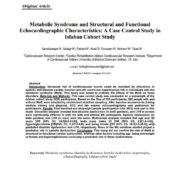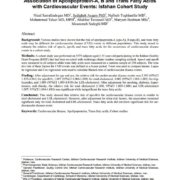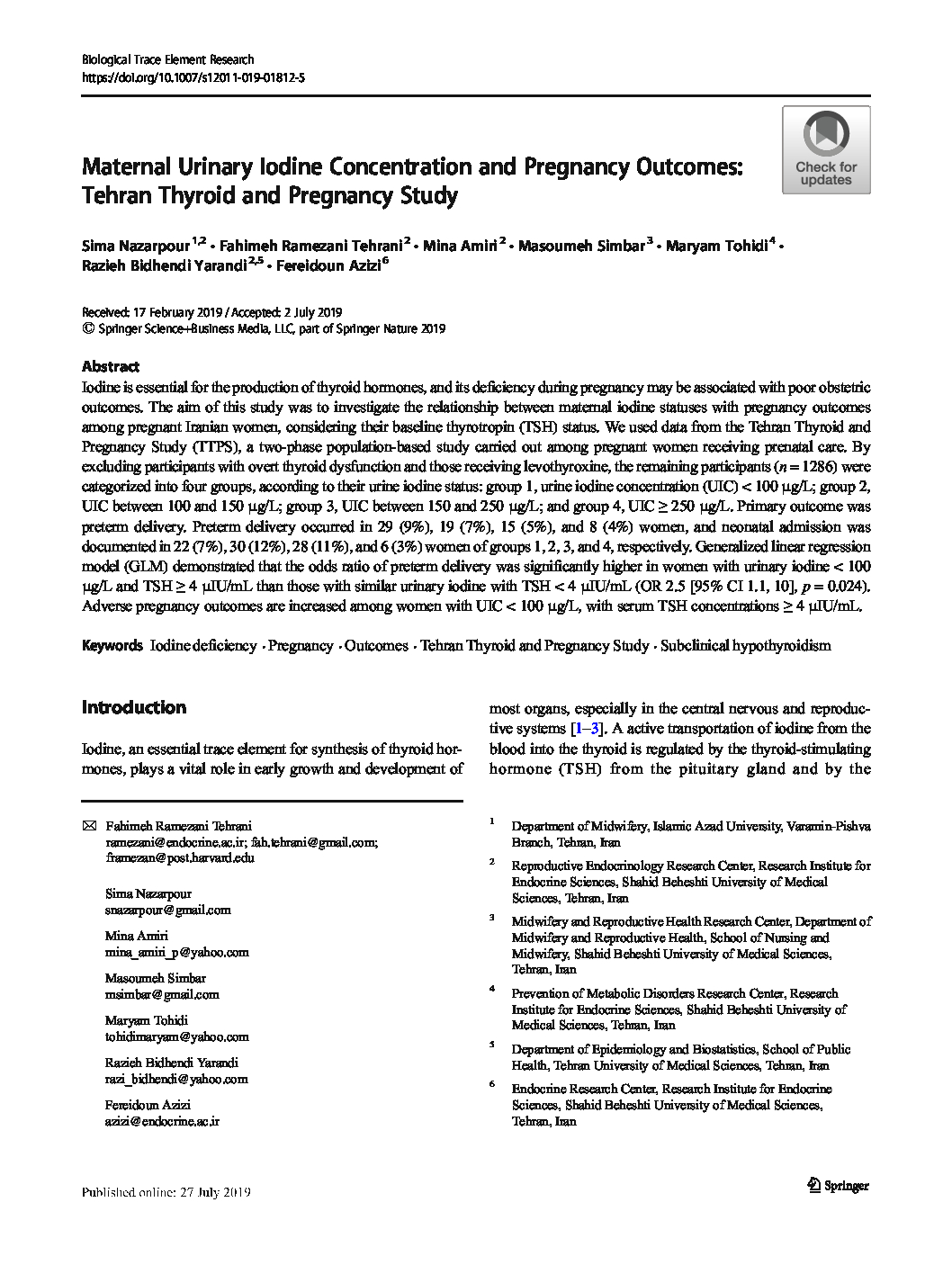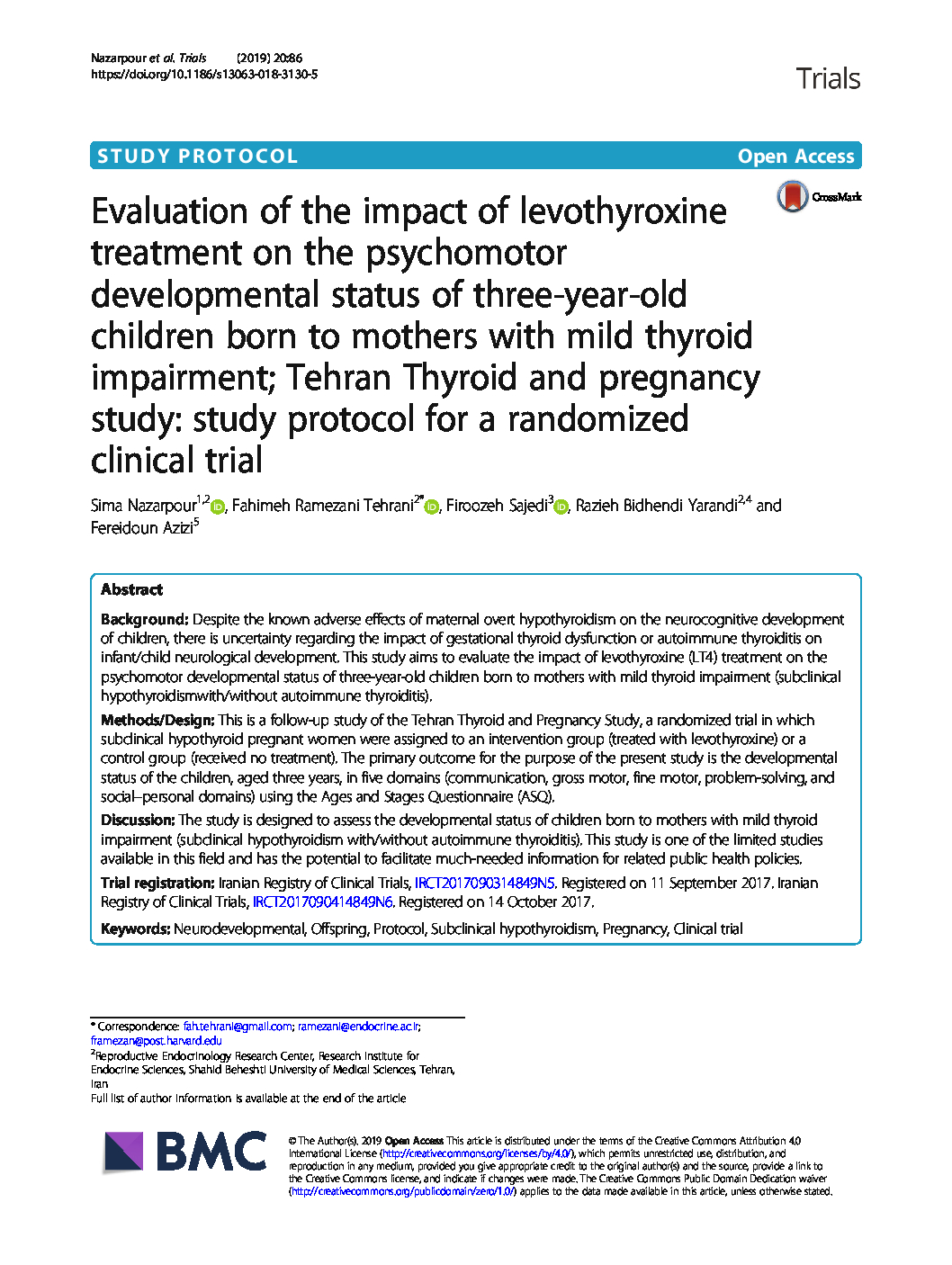Association of Apolipoprotein-A, B and Trans Fatty Acids with Cardiovascular Events: Isfahan Cohort Study
/0 Comments/in ICS Publications /by ICSIs salt intake reduction a universal intervention for both normotensive and hypertensive people: a case from Iran STEPS survey 2016
/0 Comments/in STEPs Publications /by STEPsWhat Is STEPs
/0 Comments/in STEPs news /by STEPs
In the 2016 Stepwise Approach to Non-Communicable Risk Factors Surveillance (STEPs) survey in Iran, the mean and prevalence of non-communicable risk factors have been estimated in province level. However, the mean and prevalence of risk factors of the non-communicable diseases are not equally distributed among districts in each province. The district level data can be considered to determine priority setting and public health policy. So, in the 429 districts of Iran, non-communicable risk factors were estimated by small area estimation using bayesian spatial mixed-effect regression model. The input data for small area estimation have been achieved from the STEPs 2016 survey in Iran and age-standardized and all-ages estimates were obtained by sex in each district.
OBJECTIVES OF THE PROJECT
To determine the prevalence of major preventable risk factors of non-communicable diseases in Iran (including: smoking, poor nutrition, low physical activity, high blood pressure, overweight and obesity, high blood glucose, and high blood lipids) by age and sex groups
To determine the trend of major preventable risk factors of non-communicable diseases in Iran by age and sex groups based on data generated from the annual studies
Samples under study: 31000 subjects
SPECIFICATIONS OF STEPS 2016
Proportional to sample size
Systematic random sampling
Possibility of determining the risk factor map in megacities
Fully digitalized study
Observing all activities at peripheral level through the management panel
Participation of administrative teams in the online exam
Determining the times and places of interviews via GPS
Eradicating of errors in individual registration by using the “National ID Card No.” in the datasets
All Lab exams were conducted by unique brands of devices and kits
HbA1c Test on all samples
ALT test on all samples
Urine-Na test on all samples
24h Urine Sample (PABA) on sub-samples
Specific procedure for transporting samples from all around the country
Quality control for supervision of the accuracy of data
Unique brands of all sphygmomanometers, scales, lab tubes, SIM cards, and other equipment
Designing special educational films for interviewers and lab experts
What Is Behvarz Health Study (BHS)?
/0 Comments/in BHS News /by BHS
BHS
One of the serious needs of the health system is the determination of risk factors and diseases among populations that to a large extent have the characteristics of the general population (although they may not be the true representative of the general population). The incidence rates observed and reported in these populations are needed to make some of the policy decisions. This study is aimed to use the experts in the country and abroad to design and launch the first national cohort study among employees of the Ministry of Health (health workers/Behvarz). The project is conducted among health workers (Behvarz) to appreciate and acknowledge their valuable efforts. As a result of their activities during the past 30 years something like a miracle happened in the health status of rural people and the entire population as well.
OBJECTIVES
Determining the effect size of the risk factors associated with the studied outcomes among health workers (Behvarz) of the Ministry of Health and Medical Education during the 20 years of the study
Determining the effect size of health interventions designed for the primary and secondary prevention of the studied outcomes among health workers (Behvarz) of the Ministry of Health and Medical Education during the 20 years of the study
PRODUCTS
Creating a comprehensive database of risk factors and diseases which are prevalent in the Islamic Republic of Iran
Determining the effect size of risk factors of non-communicable diseases, injuries, and accidents for the first time in such a way that the heterogeneity of risk factors will be consistent with the heterogeneity of the Iranian population
Due to a significant reduction in loss to follow-up, the quality of this study is similar to the quality of cohort studies conducted in developed countries.
Designing evidence-based policies to strengthen and integrate the health system at the national and subnational levels in the country
Promoting international cooperation with prestigious foreign academic authorities
Providing a suitable platform for launching and implementing health interventions within the cohort study to determine the effectiveness of the interventions
Building scientific capacity associated with the diseases, risk factors, epidemiological knowledge, and statistical skills in research centers and other parts of the health system in the country
Providing detection and prevention services for health workers (Behvarz) who are at the front-line and are the providers of health services in rural areas
Validation of Billewicz Scoring System for Detection of Overt Hypothyroidism During Pregnancy
/0 Comments/in Publication, STYPRN Publications /by STYPRNMaternal Urinary Iodine Concentration and Pregnancy Outcomes: Tehran Thyroid and Pregnancy Study
/0 Comments/in /by STYPRNAssociation of meal skipping with subjective health complaints in children and adolescents: the CASPIAN-V study
/0 Comments/in CASPIAN Publications /by CASPIANAssociation of sleep duration and snack consumption in children and adolescents: The CASPIAN-V study
/0 Comments/in CASPIAN Publications /by CASPIANEvaluation of the impact of levothyroxine treatment on the psychomotor developmental status of three-year-old children born to mothers with mild thyroid impairment; Tehran Thyroid and pregnancy study: study protocol for a randomized clinical trial
/0 Comments/in Publication, Publication, Publication, Publication, Publication, STYPRN Publications, STYPRN Publications /by STYPRNContact
No.24, Aarabi St, Yaman St, Velenjak, Research Institute for Endocrine Sciences, Shahid Beheshti University of Medical Sciences, Tehran, Iran. Postal Code: 1985717413, P.O Box: 19395-4763
- Tel: +982122432500 (612, 457)
- Tel: +982122402463
- Fax: +982122416264






